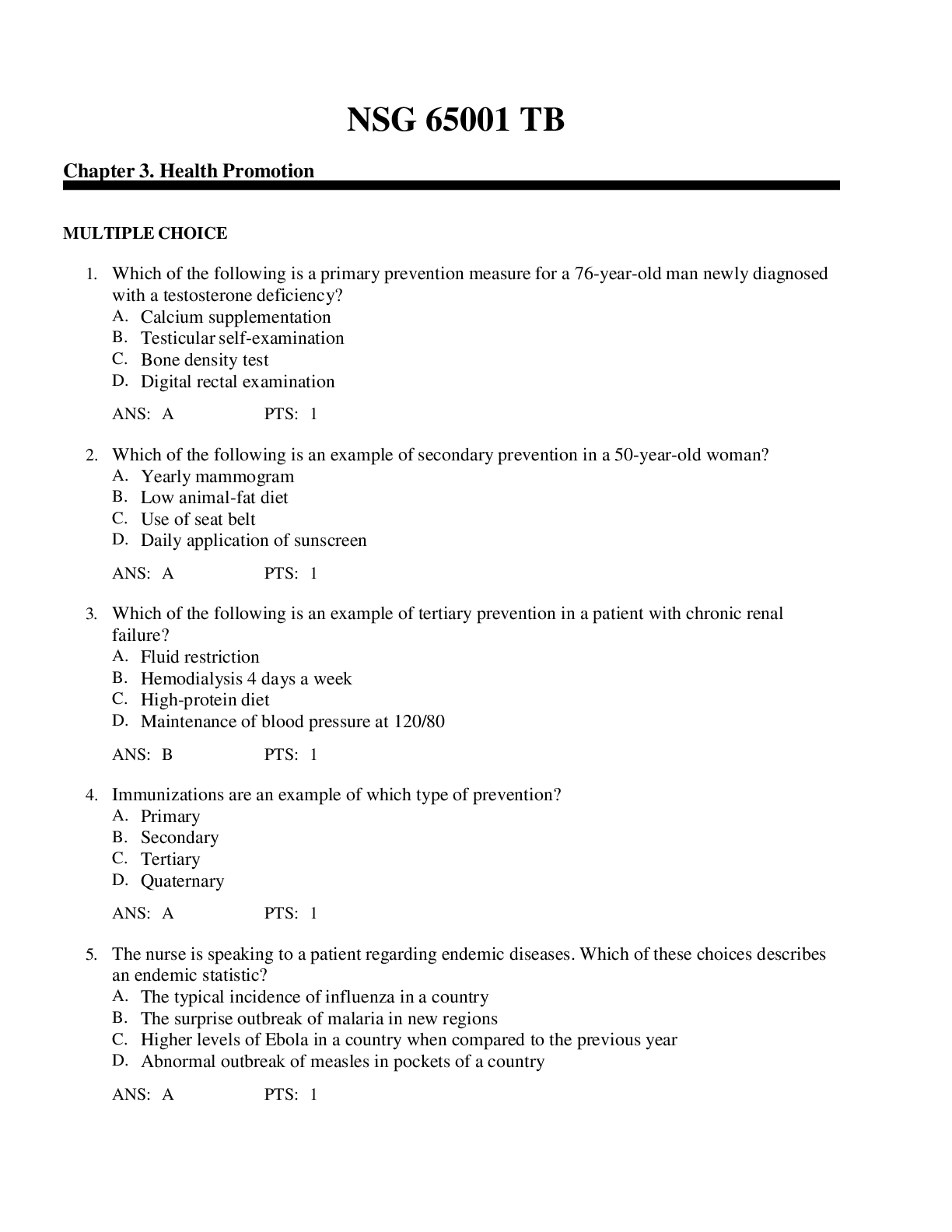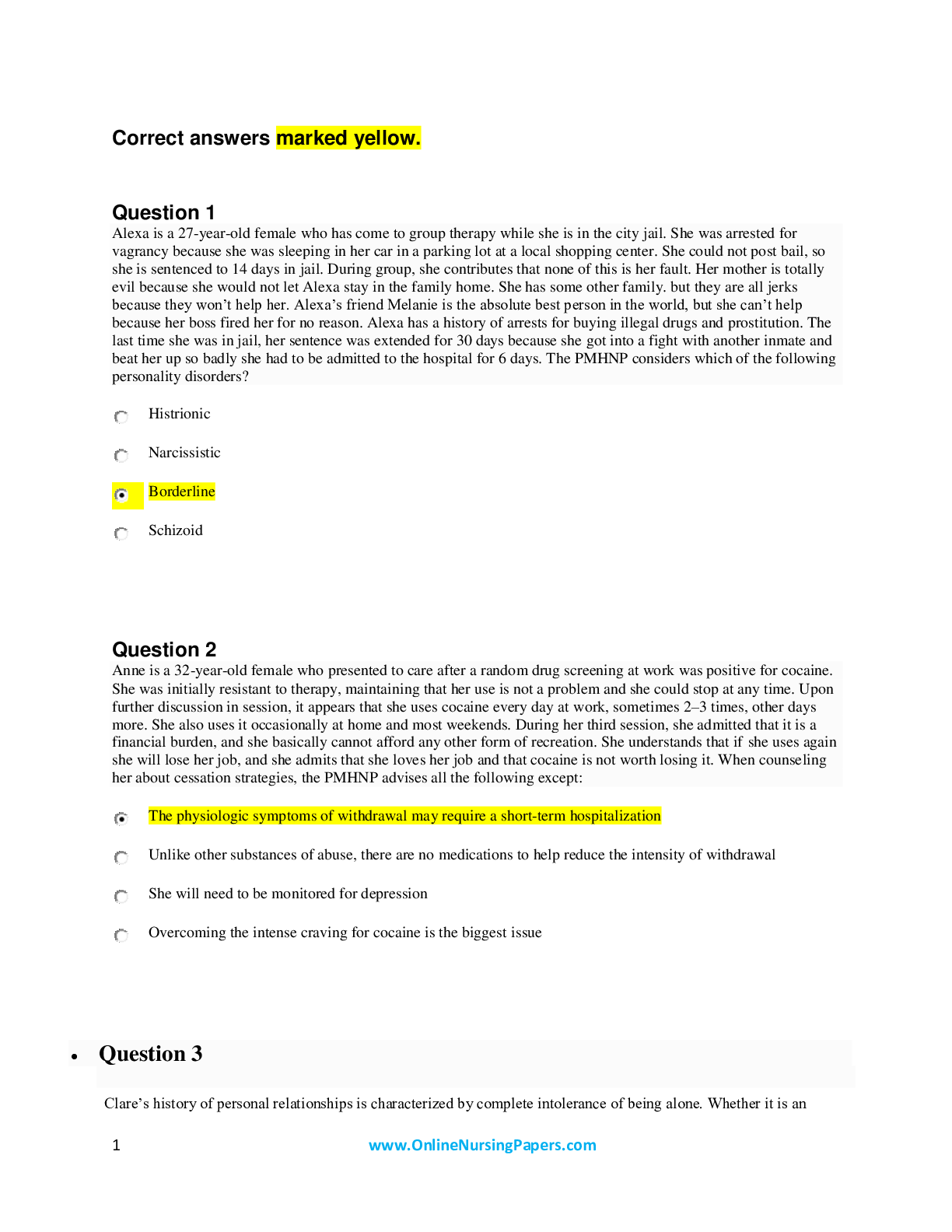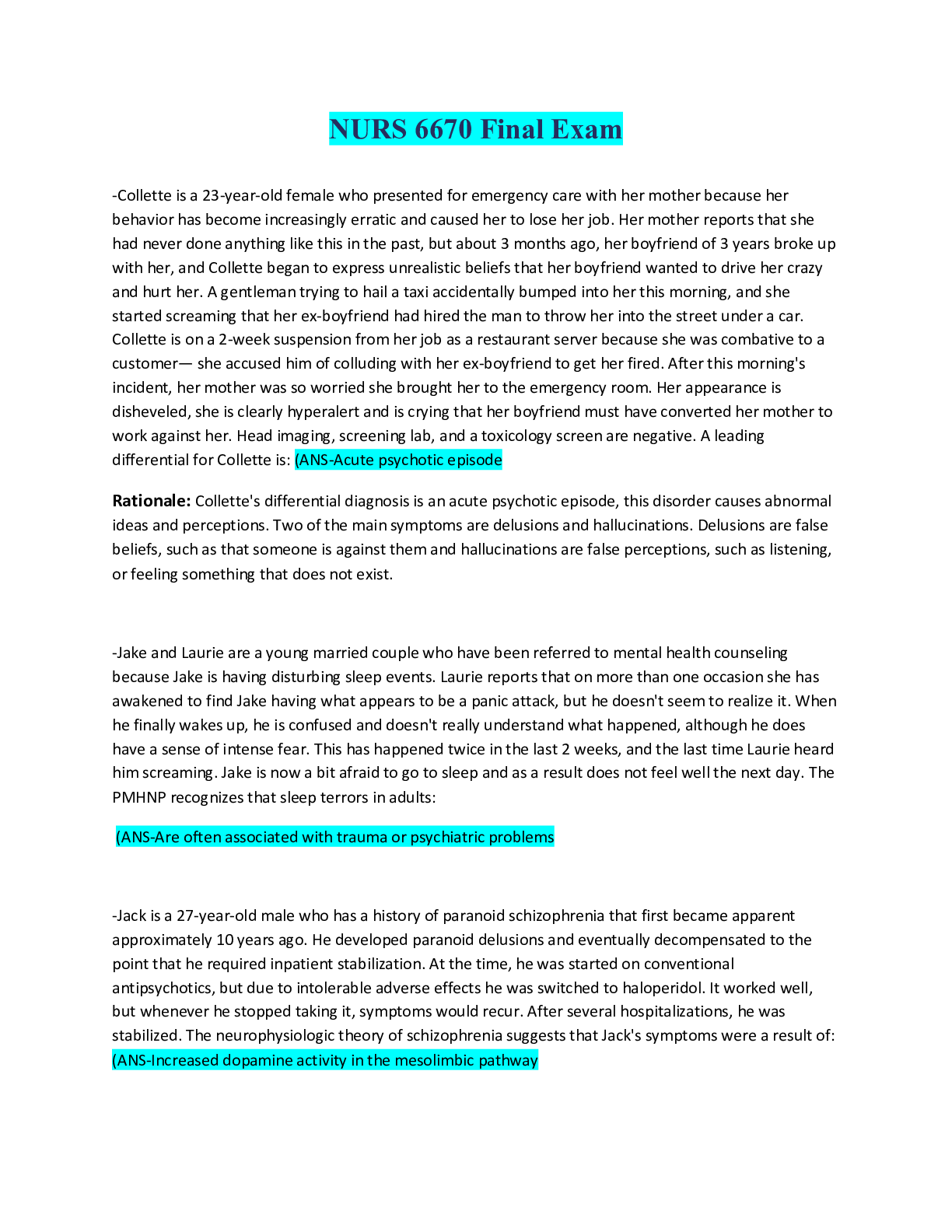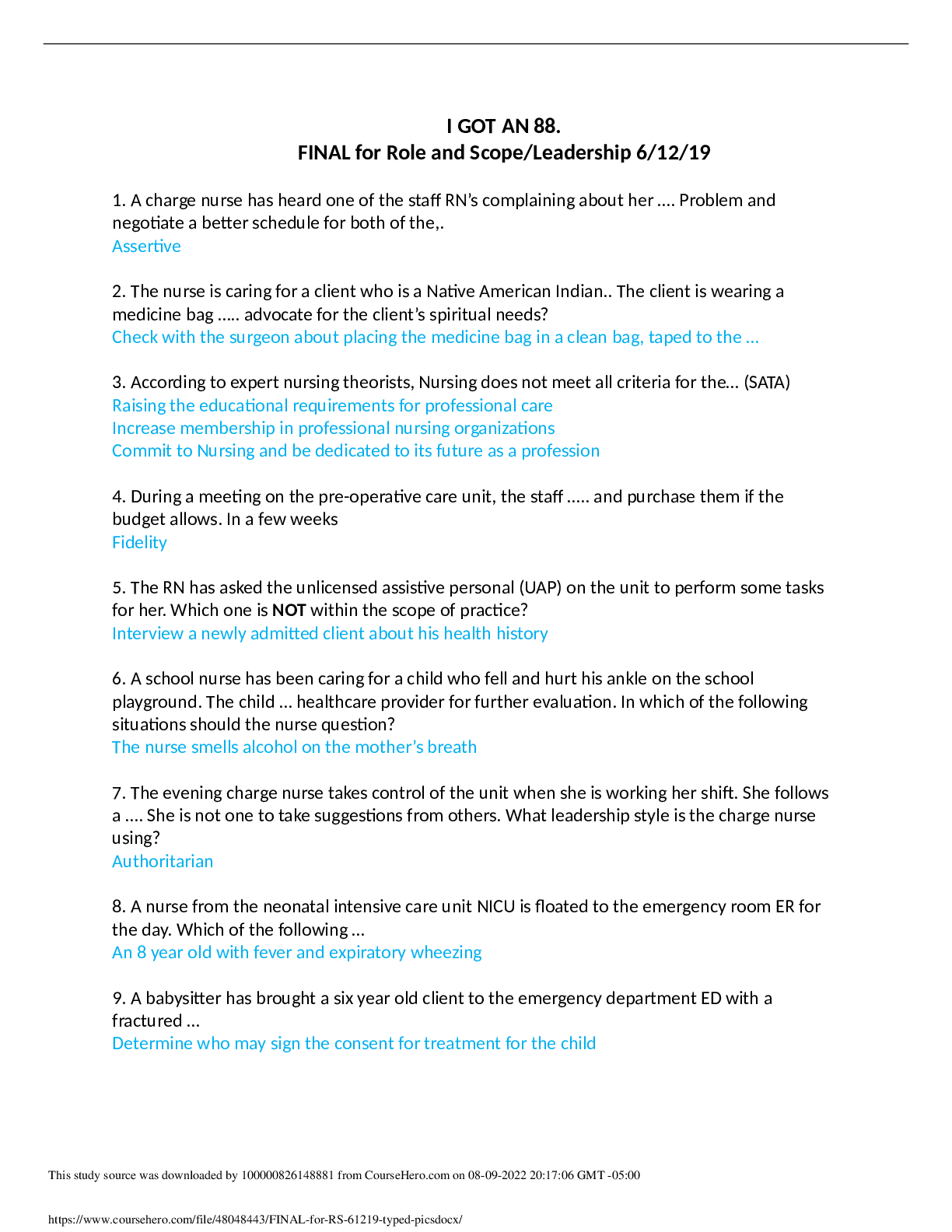ANIMAL BIOLOGY102 FINAL EXAM FOR ABI102. FULLY ILLUSTRATED
Document Content and Description Below
ANIMAL BIOLOGY102 FINAL EXAM FOR ABI102 The goal for this quarter was to determine how much energy is associated with each ATP turnover when that ATP is the result of aerobic catabolism of glucose. S... tarch, a major storage form of energy for plants, provides considerable energy for animal diets. 1. A) Name each of the two basic types of plant starch and list the chemical characteristics of each. B) The digestion starch takes place in the mid and upper jejunum. Pancreatic amylase works by “contact digestion”. What is contact digestion and what are three advantages to contact digestion. List the enzymes are required to breakdown the products of amylopectin digestion by pancreatic amylase, the product of the specific enzymatic actions, and where are the enzymes located? 2. A) Regardless of the tissues, glycolysis is the conversation of glucose to 2 pyruvates. Without chemical structure, diagram glycolysis including all enzymes, identify the control points and the controls ( and indicate whether the effects of the control is positive or negative) and include all cofactors. 3. A) The acetyl-CoA enters the TCA enters the TCA cycle. With structures, enzymes and allosteric controls, diagram the TCA cycle. The P/O ratio expresses the number of ATPs that are produced by 2e-passing through electron transport and coupling the proton gradient to ATP nproduction a. How many moles of proton are required to produce an ATP and maintain cytosolic ATP ata a constant level b. What is the P/O ratio for mitochondrial NADH+H c. What is the P/O ratio for cytosolic NADH+H d. What is the P/O ratio for mitocondorial FADH? e. One GTP was produced in the TCA cycle. How many ATP is that GTP worth and whay? >>The heat of combustion of glucose is 2820kj/mol. Given that you know how much ATP is produced from glucose catabolism. How much energy is there in the complete turnover of one mole of ATP that results from the complete oxidation of glucose? >>Ethanol has been a part of the human diet for centuries. We know enough to start considering ethanol metabolism. Ethanol cannot be excreted but must be metabolized, primarily by the liver. The first step, catalysed by the enzyme alcohol dehydrogenase (ADH). It takes place in the cytoplasm while the second step, catalysed by aldehyde dehydrogenase (ALDH) takes place in mitochondria. The acetate is converted to acetyl CoA which consumes 1 ATP and produces 1 AMP [Show More]
Last updated: 1 year ago
Preview 1 out of 4 pages
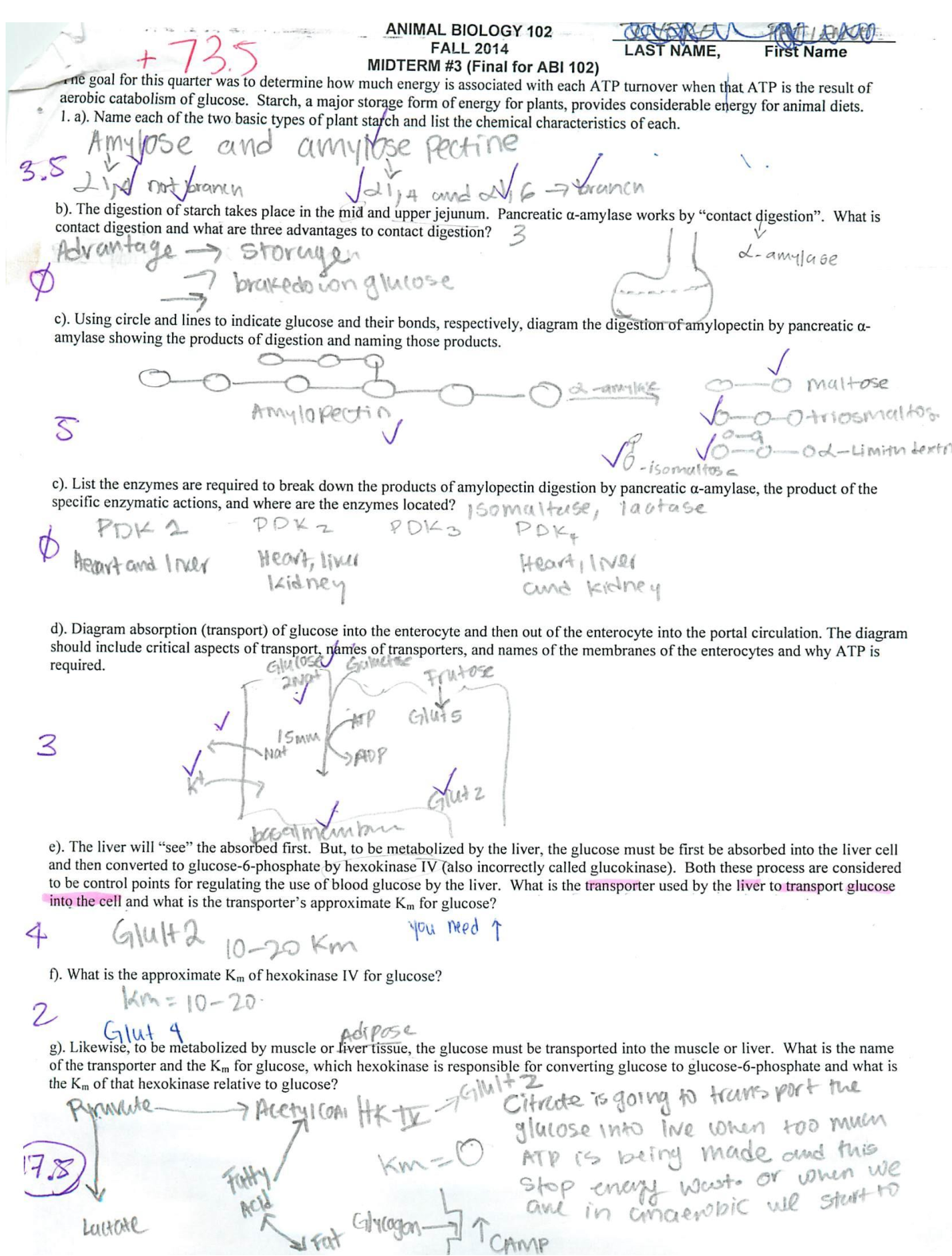
Buy this document to get the full access instantly
Instant Download Access after purchase
Add to cartInstant download
We Accept:

Reviews( 0 )
$10.00
Document information
Connected school, study & course
About the document
Uploaded On
Mar 13, 2020
Number of pages
4
Written in
Additional information
This document has been written for:
Uploaded
Mar 13, 2020
Downloads
0
Views
65



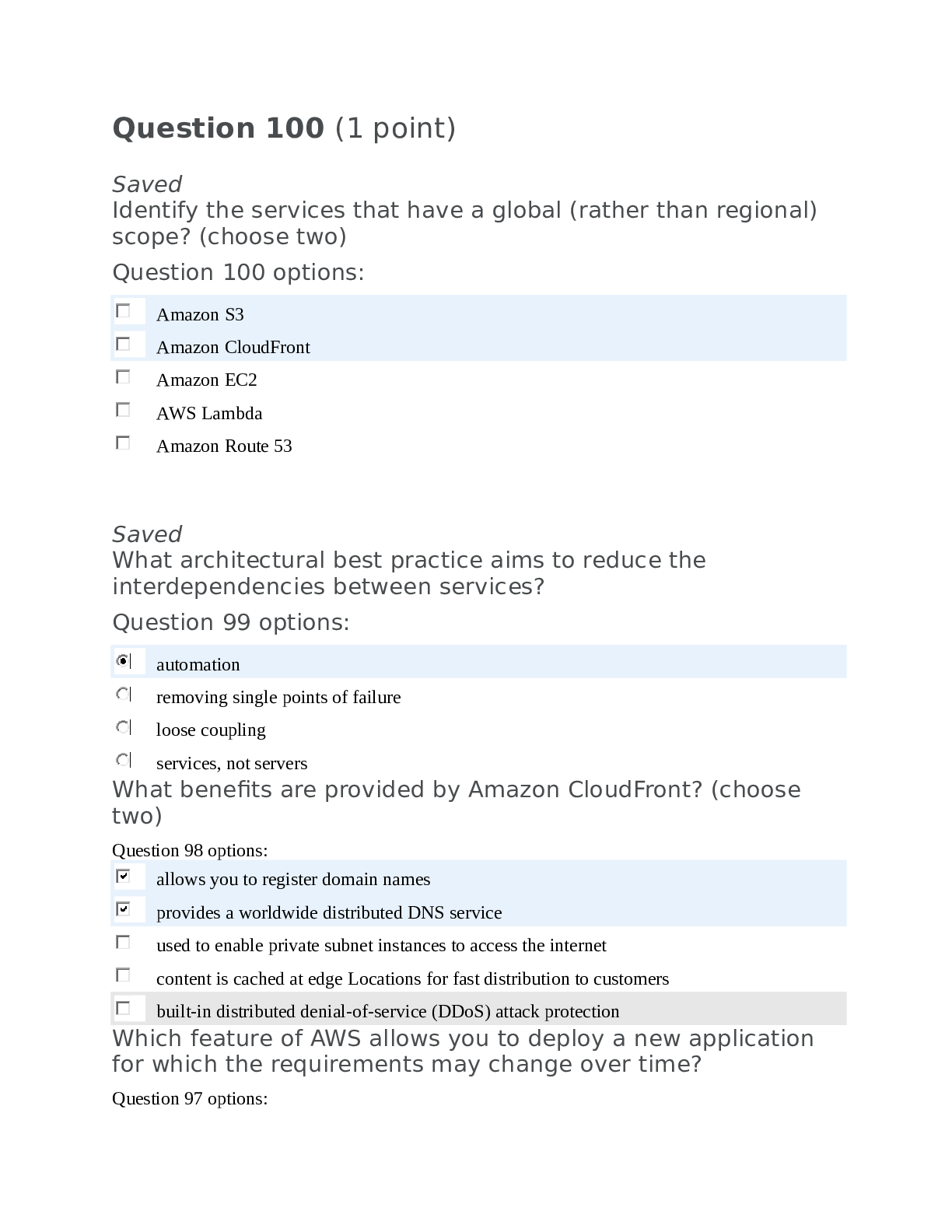

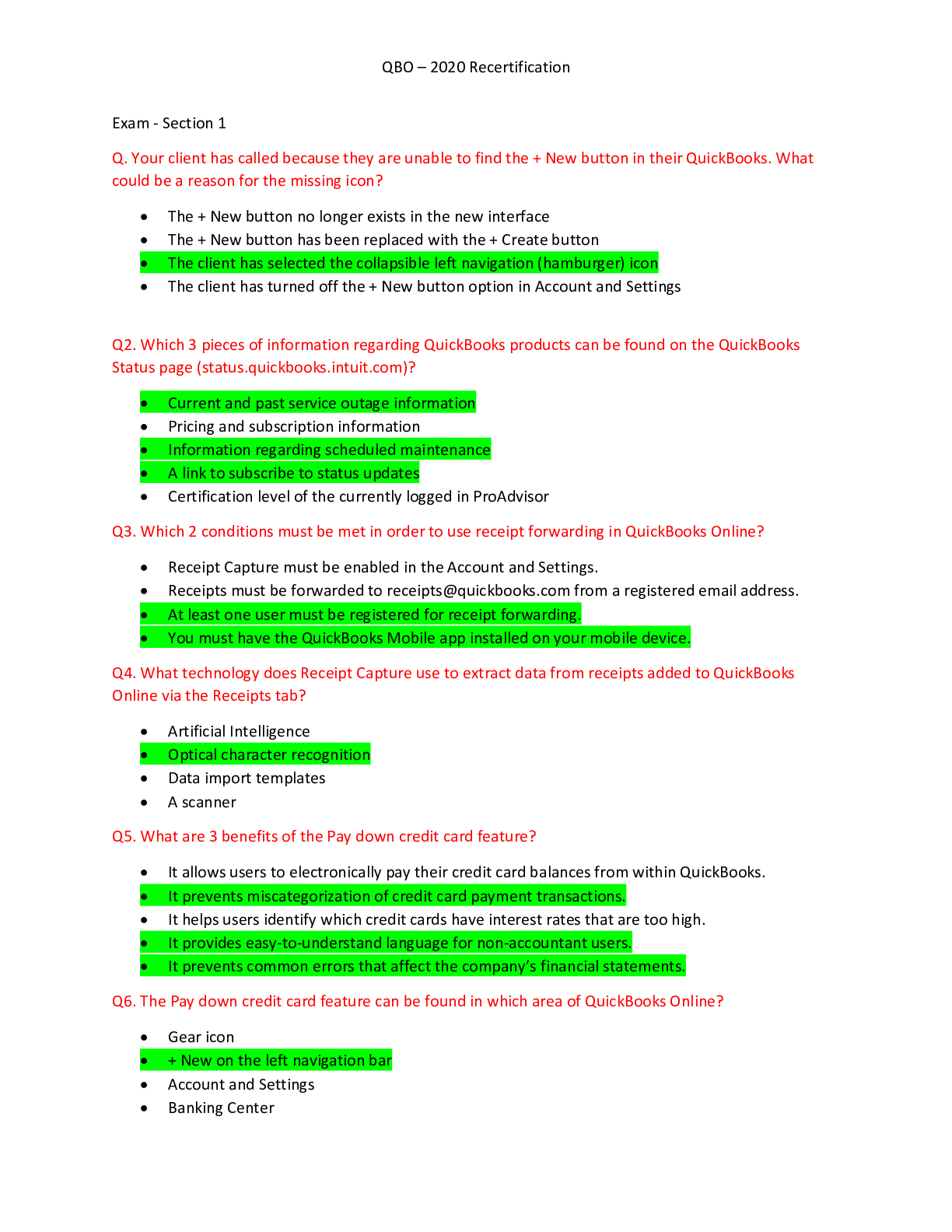



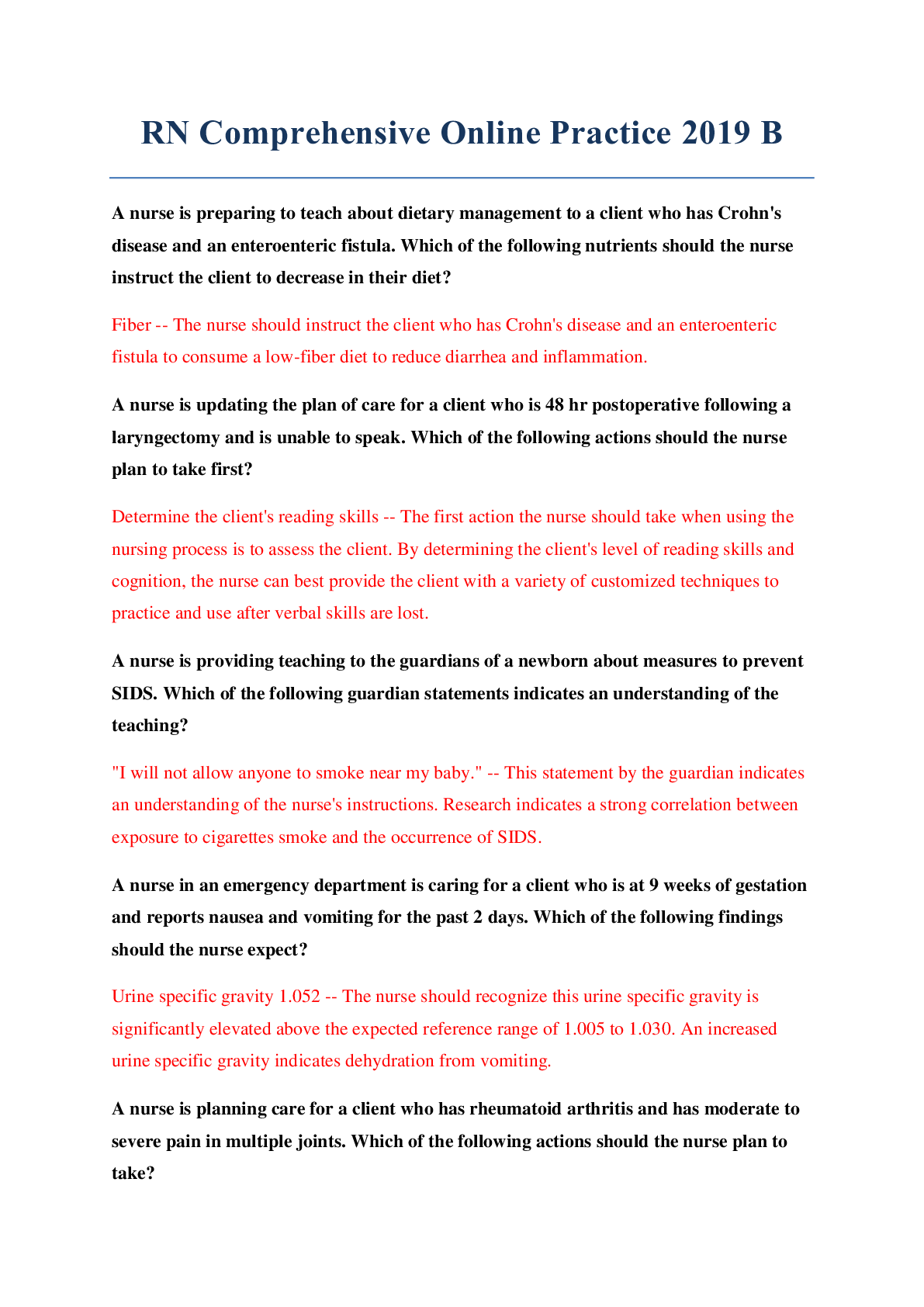



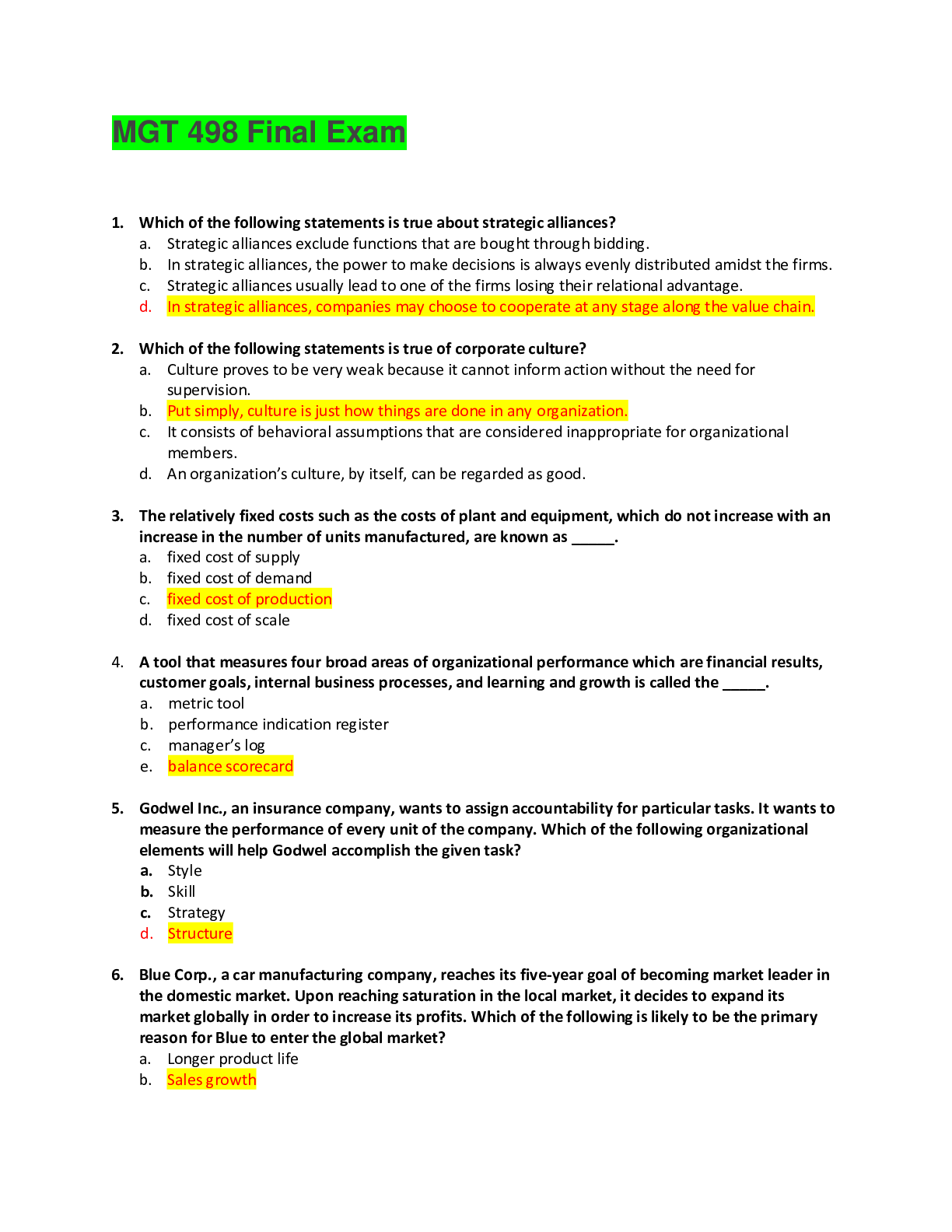
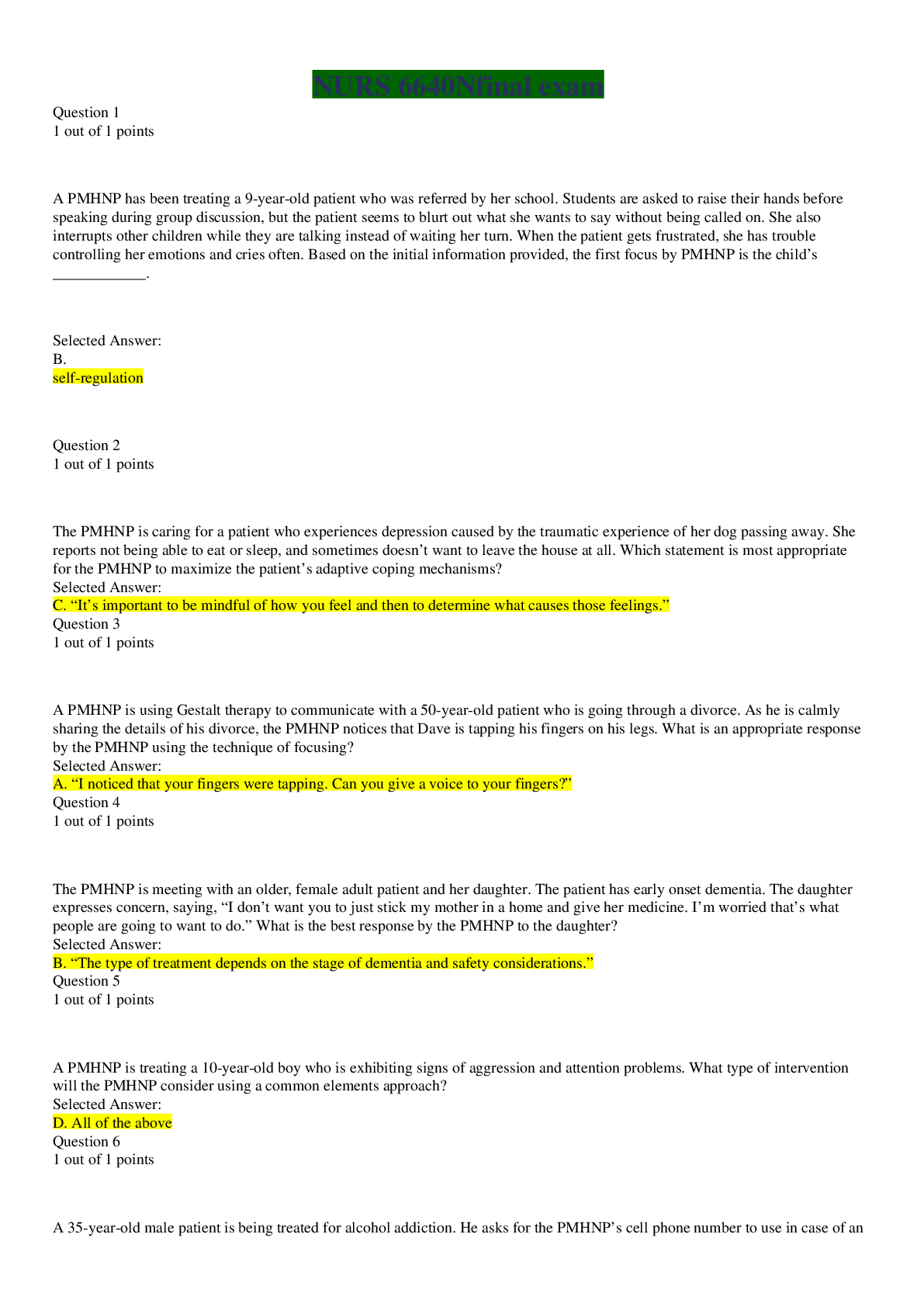

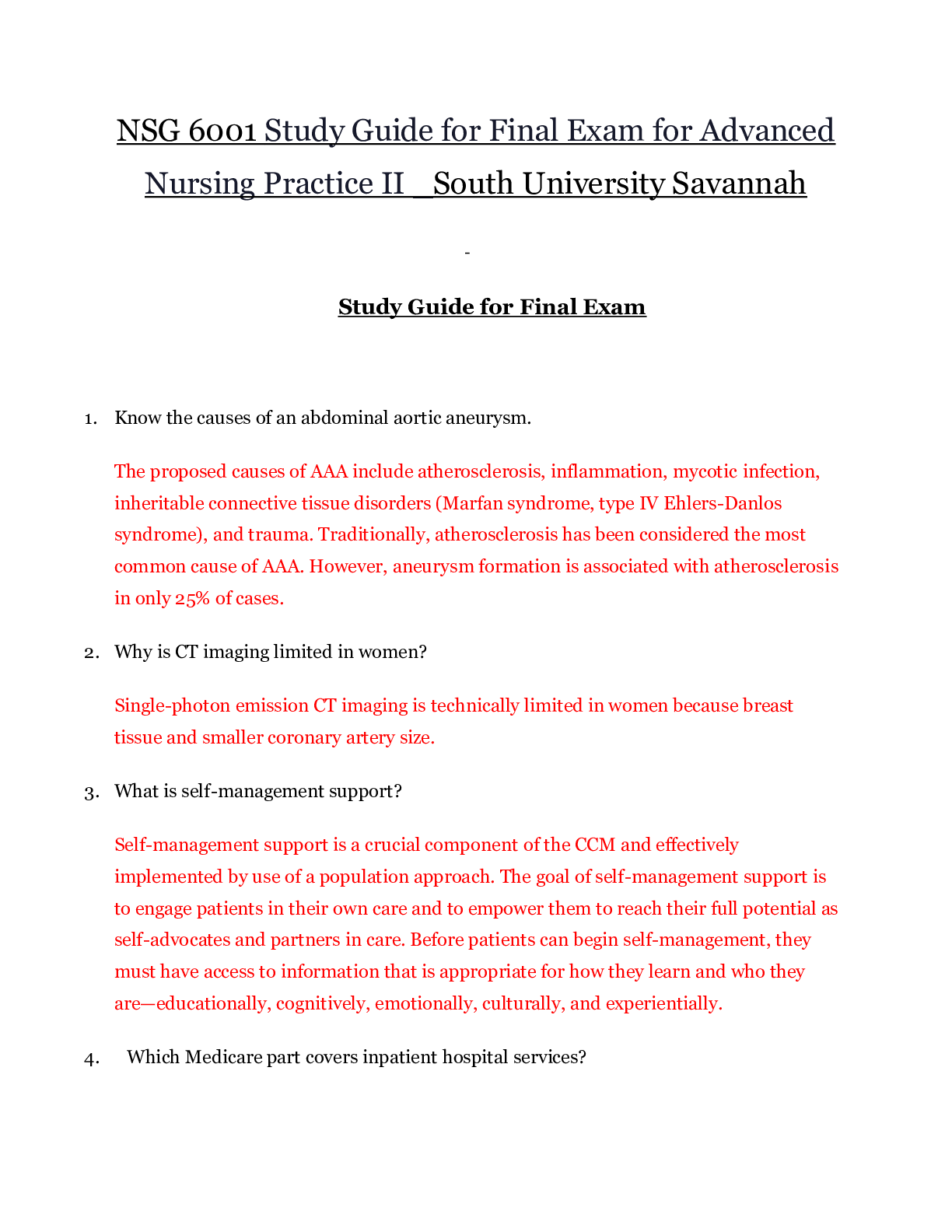
(1)(1)(1).png)

.png)
